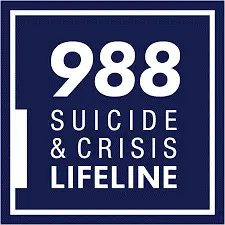mental wellness
Personal Decision Making
Personal decision-making is the process of selecting a course of action from various alternatives. Good decision-making involves considering the potential outcomes, aligning choices with values and factoring in your long-term goals.
Example: Choosing between spending time studying for an exam or attending a social event. The decision is made based on what aligns best with your academic goals and social needs.
Practical Skills to Try
- Decision-Making Model. Use a simple decision-making model like listing pros and cons to guide your choices.
- Pause & Reflect. Before making a decision, take a moment to pause and reflect on the potential consequences, both short-term and long-term.
- Align with Values: Ensure your decision aligns with your personal values and goals, whether academic, social or personal.

Stress
Stress is a natural response to challenges or demands placed on an individual. While a certain level of stress can be motivating, excessive or chronic stress can negatively impact mental and physical health.
Example: The pressure of an approaching exam can cause stress, but using time management techniques can help reduce feelings of being overwhelmed.
Practical Skills to Try
- Deep Breathing. Practice slow, deep breathing exercises (inhale for four seconds, hold for four, exhale for four) to help calm your nervous system.
- Time Management. Break large tasks into smaller, manageable steps to reduce stress levels and stay organized.
- Mindful Moments: Take short breaks throughout the day to step away and engage in mindful practices like listening to music or taking a walk.

Stressbusters: A collection of events and activities aimed at relieving anxiety.
Anxiety
Anxiety is a feeling of worry, nervousness or unease about something with an uncertain outcome. It’s a common response to stressful situations but can become overwhelming when persistent.
Example: Feeling anxious about an upcoming presentation due to fear of public speaking.
Practical Skills to Try
- Grounding Techniques. Use the 5-4-3-2-1 grounding technique (identify five things you can see, four you can touch, etc.) to redirect focus.
- Positive Affirmations. Replace anxious thoughts with affirmations like “I am prepared,” “I can manage this,” or “This feeling will pass.”
- Progressive Muscle Relaxation. Tense and then release muscle groups to alleviate tension caused by anxiety.

Self-Talk and Inner Voice
Self-talk refers to the internal dialogue we have with ourselves. This can be positive, neutral or negative, and it influences our emotional state and actions.
Example: Feeling anxious about an upcoming presentation due to fear of public speaking.
Practical Skills to Try
- Cognitive Reframing. Challenge negative thoughts by asking, “Is this thought helpful? What’s a more realistic way to view the situation?”
- Affirmations. Use positive affirmations to counter negative self-talk, like “I am enough” or “I am learning and growing.”
- Mindful Self-Compassion: Be kind to yourself, especially during difficult moments, by speaking to yourself as you would a friend.

Burnout
Definition. Burnout is a state of emotional, physical and mental exhaustion caused by prolonged stress or overwork. It can lead to feelings of helplessness and a lack of motivation.
Example: A student feeling burned out after weeks of overloading on schoolwork and extracurricular activities without taking proper breaks.
Practical Skills to Try
- Set Boundaries. Learn to say no to additional tasks when your schedule is already full.
- Prioritize Self-Care. Make time for activities that replenish your energy, such as exercise, hobbies or socializing.
- Restorative Breaks. Take regular breaks throughout the day to recharge, whether it’s a short walk, stretching, or relaxation techniques.

Gentle Flow Yoga class offered at University Recreation
Screen Time Management
Screen time management refers to the conscious control and regulation of the amount of time spent on digital devices such as smartphones, computers and television. Excessive screen time can lead to issues like eye strain, disrupted sleep and social disconnection.
Example: Spending several hours on social media or playing video games each day, which can interfere with sleep and face-to-face social interactions.
Practical Skills to Try
- Set Daily Limits. Use apps that track your screen time and set daily limits for social media or entertainment to ensure you are balancing your time effectively.
- Breaks from Screens. Take regular breaks from screen time using the 20-20-20 rule: every 20 minutes, look at something 20 feet away for 20 seconds.
- Designated Screen-Free Times. Designate specific times of day (e.g., during meals or before bed) as screen-free to promote other activities and healthier habits.
